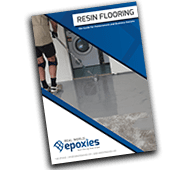Home › Advice › Know How › Knowhow
What is the Right Preparation for Resin Flooring?
Having completed several, different forms of mechanical preparation on the one concrete slab, I couldn't help but wonder: What is the right prep?
Video Transcription:
So I've been doing this trial slab for a while and I really wanted to utilise it to its utmost, to truly understand that the little grey areas that I had.
And one of those grey areas for me is all to do with having the right preparation.
So the right preparation, means there's a certain specification that talks about how the floor is going to be used. There's a certain flooring system that is then chosen as the flooring system to progress with. And then finally you turn up to the slab, you turn up to the conditions and you see what you've got.
So those three things will determine what the right preparation is for that project, for that resin floor. You can't isolate them and choose one over the other. You can't just say that it needs to be this and like a CSP 3 or whatever. You need to use the three, and so in this case here, I'm starting to question a few things.
I'm starting to say, "Well, we always think of this as the ideal preparation. A hundred percent." We call it a hundred percent because there's no dark areas. And yet here you can see that well enough.
Here is a section right next to the hundred percent line, this is actually shot blast on this side, and it's ground on this side. It's clearly a hollow, which is why it's dark. Around it, you can see that it's light grey again, so the grinder has been able to deal with that, but it can't get that hollow.
Now, the specification for this environment was basic foot traffic and some forklift traffic, it's a warehouse type of environment. So what is the actual requirements? Have we got a lot of heavy impact loads? Do we need a CSP 3 to 4? Do we need something that is more aggressive? Or perhaps, is that prep good enough?
If I can find a way to determine if my resin can penetrate into that surface, we know it's going to go into here, but if it can penetrate into this darker surface well enough to bond for that particular flooring system, which is a roll coat, and to be utilised as per the specification, which is foot traffic, some forklift traffic, basic warehousing. Then is that the right preparation?
So what preparation is good enough based on the right specification, flooring system and the slab that we have.
So that's the first thing that I want to raise as a point. And I'm going to do some little trials. I'm going to film the little trials to see how that behaves. But there's another topic that I'll talk about in a minute, and it's starting to delve into what the profiles. Have we perhaps misunderstood what CSP profiles the concrete surface profiles mean, or what they're trying to tell us? So let me find another example area and let's have a talk about that.
Perhaps we have got the idea of CSP all wrong? Or, maybe we are using it the wrong way around?
If our focus should really be on penetration into the substrate rather than profile of the substrate, then
what penetration tests should we perform to work out if we have done the right prep?
- Epoxy Flooring Short Courses
- Bronze Card Course
- Silver Card Course
_800x271a.png)
